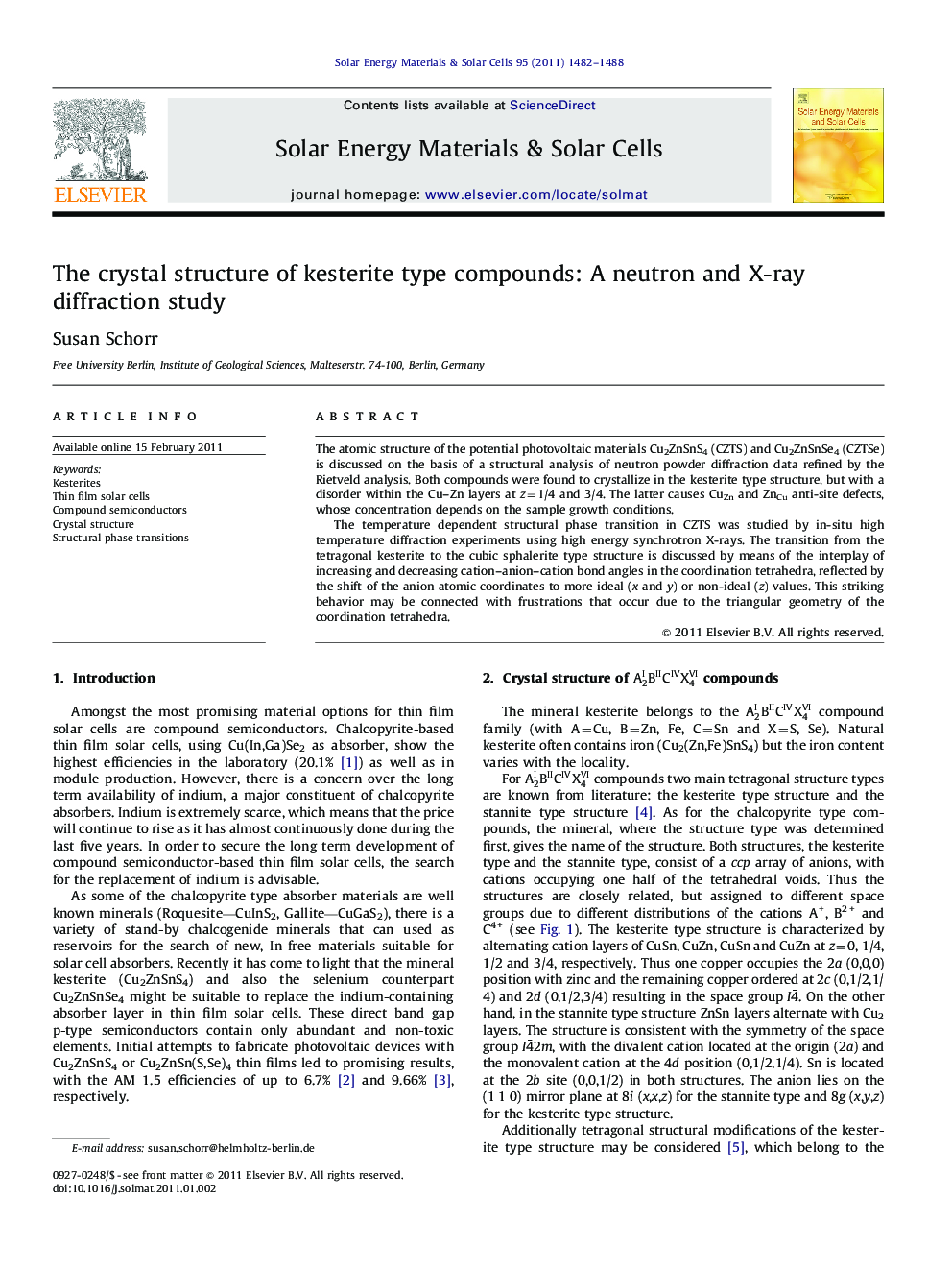| Article ID | Journal | Published Year | Pages | File Type |
|---|---|---|---|---|
| 79426 | Solar Energy Materials and Solar Cells | 2011 | 7 Pages |
The atomic structure of the potential photovoltaic materials Cu2ZnSnS4 (CZTS) and Cu2ZnSnSe4 (CZTSe) is discussed on the basis of a structural analysis of neutron powder diffraction data refined by the Rietveld analysis. Both compounds were found to crystallize in the kesterite type structure, but with a disorder within the Cu–Zn layers at z=1/4 and 3/4. The latter causes CuZn and ZnCu anti-site defects, whose concentration depends on the sample growth conditions.The temperature dependent structural phase transition in CZTS was studied by in-situ high temperature diffraction experiments using high energy synchrotron X-rays. The transition from the tetragonal kesterite to the cubic sphalerite type structure is discussed by means of the interplay of increasing and decreasing cation–anion–cation bond angles in the coordination tetrahedra, reflected by the shift of the anion atomic coordinates to more ideal (x and y) or non-ideal (z) values. This striking behavior may be connected with frustrations that occur due to the triangular geometry of the coordination tetrahedra.
Graphical AbstractFigure optionsDownload full-size imageDownload as PowerPoint slideResearch highlights► The quaternary semiconductors Cu2ZnSnS4 and Cu2ZnSnSe4 crystallize in the kesterite structure. ► In polycrystalline bulk material a cation disorder within the Cu-Zn layers at z=¼ is observed. ► The Cu-Zn disorder causes CuZn and ZnCu anti-site defects, density depends on growth conditions. ► Cu2ZnSnS4 undergoes a structural phase transition at 876°C to the sphalerite type structure.
